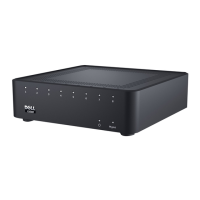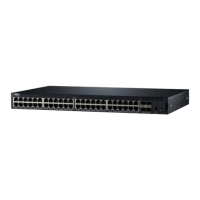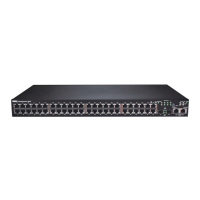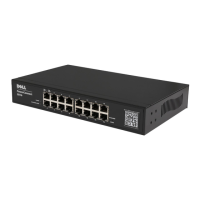280 Network Administration: SNMP Monitoring
FILE LOCATION: C:\Users\gina\Desktop\Checkout_new\Dell Astute\User
Guide\Dell_Astute_Network_Admin_SNMP.fm
DELL CONFIDENTIAL – PRELIMINARY 8/9/16 - FOR PROOF ONLY
The local information is stored in four read-only MIB variables:
snmpEngineId, snmpEngineBoots, snmpEngineTime, and
snmpEngineMaxMessageSize.
To configure SNMP:
1
Click
Network Administration >
SNMP Monitoring
>
Global
Parameters
.
The global parameters are displayed.
2
Click
Edit, Settings Icon
( ) and enter the fields:
–
Local Engine ID Type
— Select one of the following options:
•
None
—
•
Default
— Use the default engine ID, as described below:
First 4 octets
— First bit = 1, the rest is IANA Enterprise number
= 674.
Fifth octet
— Set to 3 to indicate the MAC address that follows.
Last 6 octets
— MAC address of the device.
•
User-Defined
— Enter the engine ID below.
–
Local Engine ID
— Check and enter the local device engine ID. The
field value is a hexadecimal string. Each byte in hexadecimal character
strings is two hexadecimal digits. Each byte can be separated by a
period or a colon. The Engine ID must be defined before SNMPv3 is
enabled.
–
SNMP Notification
— Enable/disable the switch sending SNMP
notifications.
–
Traps
— Enable/disable the switch sending SNMP traps.
–
Authentication Notifications
— Enable/disable the switch sending
SNMP traps when authentication fails.
3
To add a remote Engine ID, from the SNMP Global Parameters page, click
Edit
,
Add
from the main page.
4
Enter the following fields:
–
Supported IP Format
— Select either IPv4 or IPv6.
–
IPv6 Address Type
— This can be either a Link Local or Global IPv6
address.

